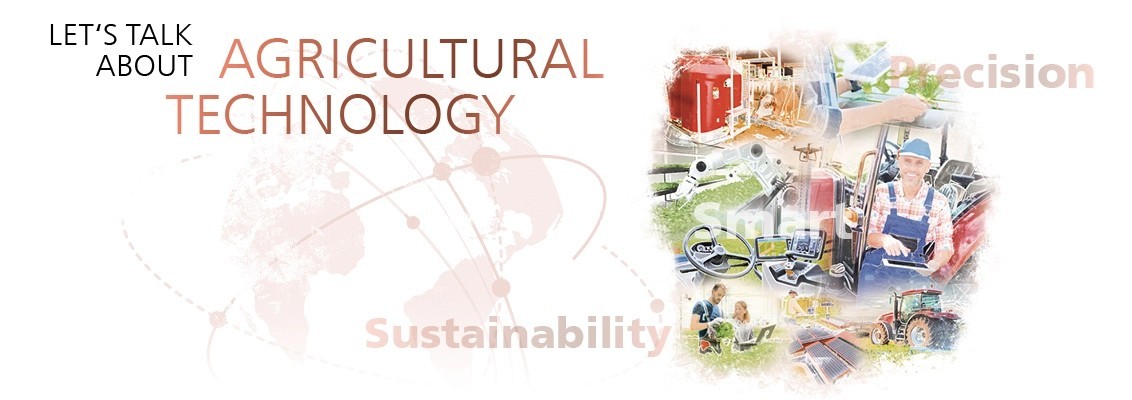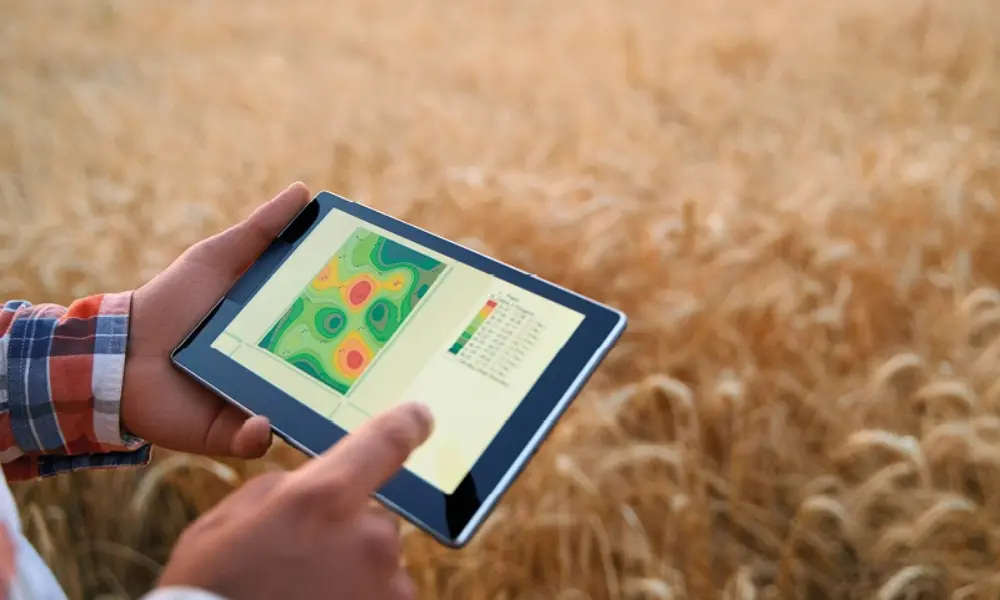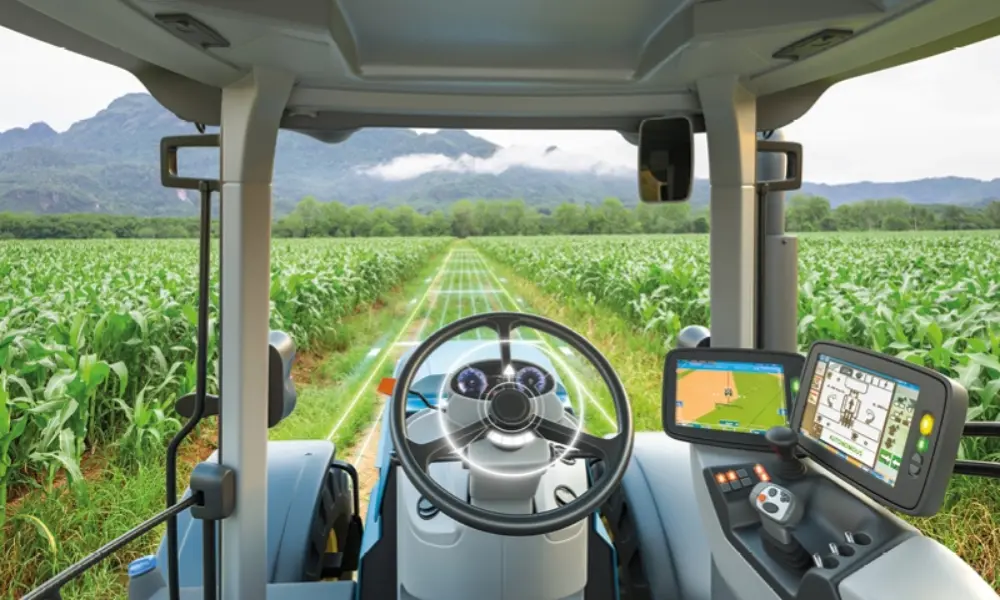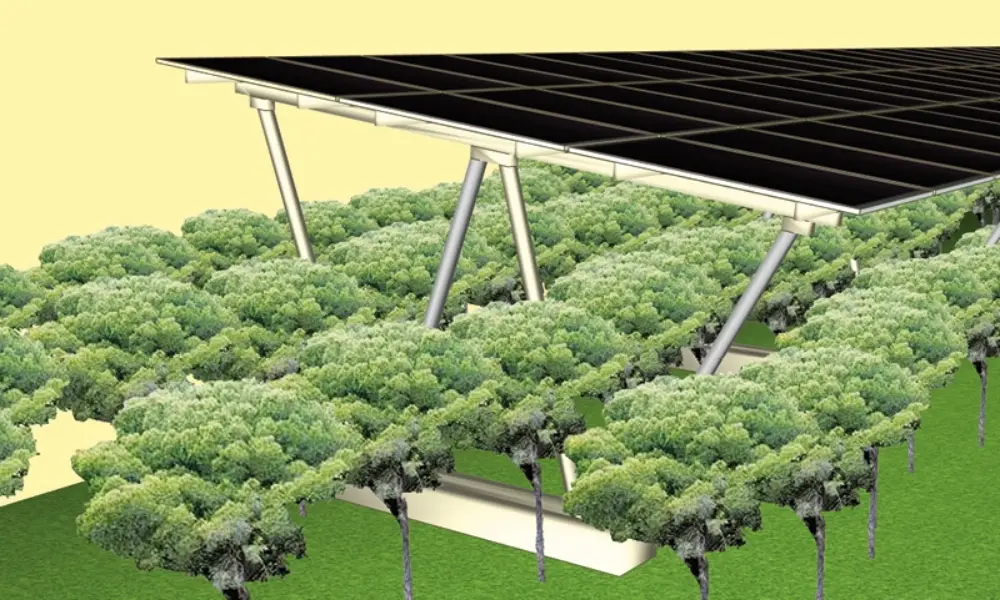Revolution on the Farm
How digital technology prepares the agriculture industry for the future

The agriculture industry is faced with tremendous changes driven by climate change, a growing global population, and the increasing scarcity of resources such as water and farmable land. In order to tackle these challenges, the industry is relying on technical innovation. Trends such as precision farming, digitalisation, and robotics are intended to help farmers produce more bountiful harvests more efficiently and sustainably. Today, we have HELUKABEL expert Oliver Adler joining us, who will assist in illuminating new technology in the agriculture sector and its potential, as well as what challenges are still needing to be overcome.
Precision Farming: Higher Efficiency through Precision
Precision Farming is one of the most important trends in modern agricultural technology. The idea is that farmers use digital technology and data analysis to optimise their production processes down to the smallest details. To this end, a wide range of information on factors such as soil condition, moisture, or crop health is collected with the help of GPS, sensors, and drones. Based on this information, agricultural land can be cultivated zone by zone, and valuable resources such as water, fertiliser, and pesticides can be used more purposefully and therefore more sparingly. "The advantages of precision farming are obvious," says Oliver Adler, Global Segment Manager Agriculture at HELUKABEL.
"Being able to precisely control agricultural processes increases performance and earnings while minimising the use of resources. This in turn reduces the impact on the environment and simultaneously saves on costs." The acquisition of modern machines and digital infrastructures presents steep up-front costs, but these pay for themselves after only a short while. According to Adler, technical proficiency is yet another hurdle for the industry. Farmers must learn new skills such as how to interpret data and how to operate new tools. Yet even here, the advantages significantly outweigh the negatives.
Digitalisation: Agricultural Technology Becomes Intelligent
The fundamental prerequisite for precision farming and many other innovations in agriculture is digitalisation, which has allowed for substantial advancements in the field of agricultural technology. Agricultural machines and devices are increasingly fitted with sensors, controls, and software. These devices are constantly connected and transmitting data to be analysed. This makes it possible for a number of processes to be monitored and optimised. Farmers are, for example, able to get real-time information on the status of their fields, the weather, or the market prices of products. This leads to greatly increased efficiency and a reduced environmental impact.
"One of the greatest challenges in digitalising agricultural machines is the integration of different systems," explains Oliver Adler. "Uniform communications standards play a big role, which are used by all manufacturers. Time and again, this presents a challenge thanks to different features." To address this issue, HELUKABEL is involved with the Agricultural Electronics Foundation (AEF), an independent organisation comprised of manufacturers of agricultural technology and other associations. Since 2008, the foundation has been working toward better compatibility between electrical and electronic components in agricultural devices such as tractors and harvesters, as well as machinery for the forestry sector. Their goal is to promote the electrification and digitalisation of the agriculture industry.
One of the most important players in this collaborative effort is the ISOBUS standard, which is a globally standardised system for the transmission of energy and data in agricultural machinery. Hybrid ISOBUS cables are primarily used to connect tractors to their attachments. This uniform standard allows farmers to quickly and easily connect machines from different manufacturers, control them from the same terminal, and thereby work more efficiently. "The HELUKABEL portfolio contains especially robust ISOBUS cables with PVC or PUR sheathing that ensure reliable communication and the transmission of energy rain or shine, dust or grime," Adler adds. The next generation of technology with vastly improved data transmission rates is waiting in the wings with High-Speed ISOBUS (HSI). HELUKABEL has already developed and successfully tested the necessary cables for this technology.
Vertical Farming: Agriculture in Tight Spaces
Cultivation and livestock farming have traditionally required large amounts of space, which, in our modern world, is becoming increasingly rare. One promising solution for this is vertical farming. This cultivation technique makes it possible to utilise unconventional areas, such as urban spaces, for agriculture. Plants are grown in multi-storey, vertical growth houses which are often constructed either in or near cities. These closed systems function independently from climatic conditions and allow for year-round production. Intelligent lighting, sensor-controlled watering, and automatic fertilisation turn these farms into high-tech factories.
"We have already supplied a number of these vertical farms with our products," Oliver Adler reports. These factories require a host of different cables for transmitting energy and data. This includes supplying energy to lights and climate control units, automation and conveyor technology, or for the exchange of information between sensors and control systems. "Vertical farming allows for the space-saving cultivation of crops under controlled conditions and in close proximity to customers," the HELUKABEL expert explains. "Even water usage is up to 95 percent lower compared to classical agriculture." However, significant investments in new technologies and a constant, reliable supply of energy are required.

Agrivoltaics: Solar Energy for the Agriculture Industry
The use of agricultural spaces for producing solar energy, which is called agrivoltaics, is becoming more and more popular in the industry. For this, specially fitted solar modules are installed above the fields so that farmers can simultaneously produce energy while planting crops beneath. These photovoltaic systems additionally protect the plants from intense solar radiation and overheating.
This dual-purpose use dramatically increases the productivity of agricultural spaces. The use of agrivoltaics also supports the local power grid, which is incredibly advantageous for isolated areas or regions with unreliable power supplies. With their SOLARFLEX series, HELUKABEL has cables specifically designed for the cabling of solar modules. They are resistant to weathering, UV radiation, and other environmental influences, and are even available with optional rodent protection. This makes these cables ideally suited for use in the agriculture industry.
Robotics: Automated Helpers in the Field and the Barn
Robots are well on their way to playing an essential role in agriculture. They are already being used in many tasks including weeding, seeing, manure management, or milking operations. And they are often able to perform these tasks more efficiently, precisely, and economically than human workers. The support of AI-based systems makes them even more effective, as it allows them to make decisions in real time.
"For the agriculture industry, robotics is an immense help," Oliver Adler confirms. "Ultimately, the shortage of skilled workers in the industry is steadily getting worse. Robots are a means to counter this. They are also able to work around the clock and the quality of their work is consistently high." Many farmers, however, have yet to accept the assistance of robots, which must also be designed to be flexible enough to react to unpredictable conditions out in the open. There is also legal footing regulating the use of autonomous machines on farm fields and is a heavily discussed topic in the industry.

Conclusion: New Ideas for the Future

Oliver Adler is Global Segment Manager Agriculture at HELUKABEL GmbH
The agriculture industry finds itself in the middle of a dramatic transformation. New technology such as precision farming, vertical farming, agrivoltaics, and robots supplies the industry with the solutions it needs for the growing number of challenges it is facing. The results of this are more efficient and sustainable production methods that meet the needs of a growing global population and help address the effects of climate change.
Electrification, digitalisation, and automation are the basic ingredients required to put these innovations in agricultural technology into practice. For companies, this also means they are occasionally required to make considerable investments, which, however, pay for themselves in the middle and long term thanks to their enormous potential for increased efficiency. As an experienced partner of a number of agricultural technology manufacturers, HELUKABEL has an extensive portfolio of electrical connection technology that is specifically designed for the particular conditions of the agriculture industry. HELUKABEL cables, wires, and accessories ensure the reliable transmission of data and energy, thereby playing their part in preparing the industry for the future.



